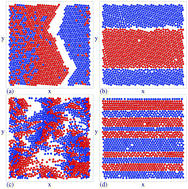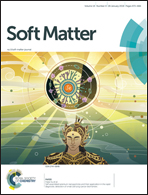Velocity force curves, laning, and jamming for oppositely driven disk systems
Abstract
Using simulations we examine a two-dimensional disk system in which two disk species are driven in opposite directions. We measure the average velocity of one of the species versus the applied driving force and identify four phases as function of drive and disk density: a jammed state, a completely phase separated state, a continuously mixing phase, and a laning phase. The transitions between these phases are correlated with jumps in the velocity–force curves that are similar to the behavior observed at dynamical phase transitions in driven particle systems with quenched disorder such as vortices in type-II superconductors. In some cases the transitions between phases are associated with negative differential mobility in which the average absolute velocity of either species decreases with increasing drive. We also consider the situation where the drive is applied to only one species as well as systems in which both species are driven in the same direction with different drive amplitudes. We show that the phases are robust against the addition of thermal fluctuations. Finally, we discuss how the transitions we observe could be related to absorbing phase transitions where a system in a phase separated or laning regime organizes to a state in which contacts between the disks no longer occur and dynamical fluctuations are lost.



 Please wait while we load your content...
Please wait while we load your content...